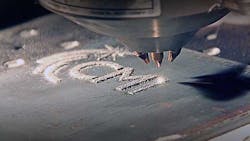It was fewer than three years ago that many in the rare earth supply chain were rattled by exorbitant price hikes and increasingly restricted access to these key inputs to a host of high-tech products from hybrid cars, catalysts and defense technologies to lighting, glass polishing, wind turbines and more.
The culprit had a name -- China -- which dominates production of rare earths and whose export restrictions drove the price spike.
In response to China's actions, discussions ramped up about finding new sources of the 17 elements typically identified as rare earths -- 15 lanthanides plus scandium and yttrium—which exhibit unique magnetic, luminescent and electrochemical properties. These properties help in the development of technologies with reduced weight, greater efficiency and other improvements.
Mining firms began exploring new opportunities outside of China. Dollars were put against research with a singular aim: to reduce or eliminate dependence on China for rare earths.
And in 2012 the United States, EU and Japan filed a complaint with the World Trade Organization, arguing that China was not playing by global trade rules with its export restrictions.
That was then. In July 2014, rare earth prices are a fraction of their 2011 highs. Prices dropped as precipitously as they shot up. The "noise" surrounding access to rare earths has diminished.
That's not surprising. "The 'noise' tends to be related to the price of rare earths. Prices spiked horribly in 2010, 2011, and they settled back down," says Alex King, director of the Critical Materials Institute, housed at the U.S. Department of Energy's Ames Laboratory. Nevertheless, he notes, "the prices are still two or three times higher than they were prior to 2010."
In short, the rare earths dilemma remains for many companies and nations. Recent activity illustrates the many ongoing efforts to lessen China's influence on the rare earths supply chain. Here's a brief update:
In March the World Trade Organization ruled against China in the complaint filed by the United States, the European Union and Japan in 2012. The dispute centered on Chinese export restrictions on rare earths, tungsten and molybdenum in the form of export duties, quotas and limitations on the businesses permitted to export.
Rare Earth Ruling: Little Immediate Impact
While China argued such restrictions were put in place to conserve its resources and for environmental reasons, the complainants said the restrictions were designed to provide Chinese industries with protected access.
The WTO ruling had little immediate impact, as China appealed it almost immediately.
Moreover, Roskill Information Services, a metals and minerals market research firm, suggested in a June 14 briefing paper that even had China dismantled certain of its restrictions, the impact would be less than meaningful.
For example, notes Roskill, "The removal of the export quotas alone is not expected to have any significant impact on the volume or rare earth products exported from China, as actual rare earth export volumes have remained significantly below the export quotas set by the Chinese Ministry of Commerce since their introduction in 2005."
On the other hand, Roskill noted that a removal of export taxes "would be a significant step in opening up the Chinese domestic rare earths market to the rest of the world." It could negatively impact non-Chinese rare earth producers such as Molycorp and Lynas, however, by driving down prices, the report noted.
Australia's Lynas already has been troubled by delays in ramping up its advanced materials plant in Malaysia, and in June the company replaced its CEO.
Likewise, Greenwood Village, Colo.-based Molycorp continues to ramp up production at its mine in Mountain Pass., Calif. The company began active mining at Mountain Pass in December 2010 for the first time since 2002. The mine had been closed in response to environmental issues and declining prices for rare earths.
Molycorp is struggling. In first-quarter 2014 results, the company cited softening pricing for rare earths as a factor in its 4% revenue decline over the previous year's results. Moreover, it reported lower-than-expected production of rare earth oxides in the first quarter as a result of production interruptions while the company works to optimize operations.
Still, Molycorp in March reported that it had completed the commissioning of a cracking plant in Mountain Pass that should both increase throughput and reduce production costs.
Political Maneuvers
In June U.S. Rep. Steve Stockman, R-Texas, introduced H.R. 4883, the National Rare-Earth Refinery Cooperative Act. It is a House companion bill to legislation introduced earlier in the year by Sen. Roy Blunt, R-Mo.
Both bills promote the same idea: to lessen the United States' reliance on China for access to rare earths and increase U.S. production. Specifically, they promote the establishment of a thorium bearing rare-earth refinery cooperative "to provide for the domestic processing of thorium-bearing rare-earth concentrates as residual unprocessed and unrefined ores."
"Our nation needs to establish this cooperative so American corporations no longer have to relocate their manufacturing facilities and jobs to China and relinquish control of their intellectual property rights to have access to a rare-earth supply chain," Stockman said.
Both bills were referred to congressional committees.
Canada Reviews Rare Earths
The Canadian government, too, has been examining the rare earth industry and in June its House of Commons Standing Committee on Natural Resources released results of a study on the industry in Canada. The study comprised witness testimony provided over four meetings.
Citing data provided in February by the Canadian Rare Earth Elements Network—created in 2013 to establish Canadian-based rare earths production--the study noted that Canada is host to 19 of 56 global rare earth projects that are in an advanced exploration and development stage or resource identification stage.
Nevertheless, witnesses said Canada lags other countries in its investment in rare earth production, while at the same time noting that the country is rich in rare earth deposits. No rare earth production or mining occurs as yet in Canada, the report stated.
Multiple witnesses emphasized that the federal government has an important role to play in advancing Canada's rare earths industry, including but not limited to providing financial assistance for research and development.
The report quotes Al Shefsky, president of Pele Mountain Resources Inc., who said Canada should implement "a national strategy that prioritizes support to the development of critical rare earth deposits and the separation of rare earth into refined products."
Rare Earths R&D in the U.S.
The Critical Materials Institute, an energy innovation hub for the DOE, recently celebrated its first-year anniversary with 11 invention disclosures, all of which are related to materials critical to the clean energy economy. Five of those critical materials are rare earths. (The DOE determines criticality based on the importance of the material, as well as the ease of acquisition.)
"We're going fast," says the Critical Materials Institute's King. "All of the inventions we've announced have real potential and in some cases they already have people who want to license them from us."
As examples, King cited progress in new materials to replace rare earth elements in lighting applications as well as processes to extract the crystal materials "from fairly unusual sources."
King outlined the threefold strategy the CMI employs to address what the DOE has identified as "critical" materials. The first pillar of that strategy is to diversify sources. "For us that means developing technologies that allow new mines to come online and be economical and productive and profit-making," King says.
A second pillar is to simply invent new materials that make the old ones obsolete. And the third approach is to be more efficient in the use of the available critical materials. The institute's role is to explore new technologies that waste less material during the manufacturing process, as well as end-of-life recycling.
King expressed optimism that one technology invented by CMI will be adopted "very soon." "That is extremely unusual in the field of materials, which typically takes 20 years to go from the lab to use in a product."
He attributes the speed to the organization's close engagement with corporations that need the critical materials. "We listen really well to industry and we solve the problems that matter, not the ones that are necessarily the most interesting to the scientists in us," King says.
Moreover, "the reason we have been able to go that much faster is because we have production line staffs working with us from day one," he says.
Innovation Materials Treaty
Michael Silver has been promoting a potentially unique solution to the rare earth challenge—an Innovation Materials Treaty.
Silver, chairman and president of American Elements, makes two points: 1. China will always have a monopoly on rare earths and 2. At issue is China's pricing structure – it charges one price for rare earths and other critical materials for Chinese companies and another, higher price for others.
Moreover, he says, any one or any country that believes it can innovate around rare earths or find ways not to use them in innovative technologies "is in denial."
The unique properties of rare earths will become more important, not less, to advanced technologies and should spur innovation to exploit those properties, he believes.
Silver describes the vast sums of money being spent by industrialized nations on research to avoid using rare earths as "innovation distortion."
In response, Silver calls for a treaty that levels the playing field for all users of rare earths. It would require all signatories "to agree that once an Innovation Material is sold within their borders, the material may be removed from the country without any financial or quota restrictions." Thus China could charge whatever it wanted for its rare earths, but all buyers—domestic or foreign—would bear an equal burden.
Why might China participate in such a treaty? The country controls rare earths. Driving potential customers to find ways not to use those rare earths is counterproductive, Silver points out.
Another Price Spike?
Another price spike also would be counterproductive, research firm Roskill warns.
Writes Roskill: "The Chinese government must take care not to cause another spike in rare earth prices like that experienced in 2011-2012, as this would encourage further substitution of rare earth products and could ultimately result in demand destruction."
About the Author
Jill Jusko
Bio: Jill Jusko is executive editor for IndustryWeek. She has been writing about manufacturing operations leadership for more than 20 years. Her coverage spotlights companies that are in pursuit of world-class results in quality, productivity, cost and other benchmarks by implementing the latest continuous improvement and lean/Six-Sigma strategies. Jill also coordinates IndustryWeek’s Best Plants Awards Program, which annually salutes the leading manufacturing facilities in North America.
Have a story idea? Send it to [email protected].


